Overview of EMT Program
The Emergency Medical Technician (EMT) Certificate of Achievement program provides comprehensive instruction in the skills necessary for success as an EMT in the emergency services industry. This program is designed to meet the needs of current students and in-service professionals interested in career advancement and for those seeking to advance their EMT knowledge. This program is aligned with the EMT-Basic: National Standard Curriculum and incorporates the National Registry of Emergency Medical Technicians psychomotor exam. Career opportunities after completion of the certificate include EMT, Emergency Room Technician, and Search and Rescue.
EMT Frequently Asked Questions
Is a CPR card a prerequisite for the EMT R169 course?
Yes. Students must have a current CPR card from either the American Heart Association or American Red Cross as listed below. Cards from Training Solutions, EZ CPR, or any online program will not be accepted. If you have any questions, please email the EMT program coordinator or your instructor.
| American Heart Association - "Healthcare Provider" BLS | OR |
Red Cross - "Basic Life Support (BLS) for the Healthcare Provider" |

|
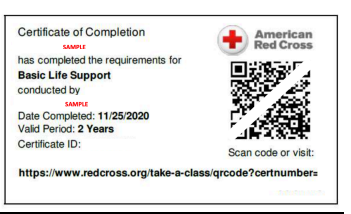
|
What is the minimum age to enroll in EMT R169?
All students must be 18 years or older by the start of the class due to the clinical site partner’s contractual requirements. There are no exceptions.
What do I need for the first day of class?
1. Students must attend the first-class meeting, or they will be dropped.
2. Students are required to have their current CPR certification as described above.
3. Proof of being at least 18 years old.
Details related to textbooks, uniforms, and equipment will be sent to your VCCCD email by your instructor and/or EMT program coordinator one to seven days prior to the first class meeting.
Is there a required health exam and drug test for EMT R169?
Yes. The clinical sites require students to have a health exam, an immunization check, and urine drug (including marijuana) and alcohol test prior to participation at clinical sites. This is a cost to the student and can be obtained at the Oxnard College Student Health Center (OCSHC) or through a private physician or clinic. OCSHC requires appointments and does not take walk-ins. Students are encouraged to make appointments as early as possible.
If you choose to go to your private physician, you must also schedule an appointment with the OCSHC to review your completed paperwork. The health exam form must be completed and all test results given to the instructor prior to the 6th week of class. If this requirement is not met, students will not be allowed to take the midterm and will be dropped from the class.
Why is a background check required for EMT R169?
The California Emergency Medical Services Authority, through the Ventura County Emergency Medical Services Agency, may deny certification to those with criminal records. Also, clinical sites require students who come to their facilities to have completed a criminal background check. If students do not pass the background check, they will not be able to go into the hospitals for clinical experience and may not be able to get a course completion record, which is needed to become an EMT.
The background check will consist of the following:
- SS number verification
- Criminal Search (7 years)
- Violent Sexual Offender and Predator Registry Search
- HHS/OIG List of Excluded Individuals/Entities
- GSA List of Parties Excluded from Federal Programs
Does an EMT R169 student have to obtain a student ID card?
Yes. The clinical sites require students to have a picture ID for their clinicals and ambulance ride a-longs. The Oxnard College student ID card is the official photo identification for all Oxnard College EMT students and must be worn during their clinical visits.
Is the EMT R169 course required to apply for the OC Fire Academy?
Yes. Please refer to the OC Fire Academy website for all prerequisites.
What are the requirements to take the NREMT?
- Successful completion of EMT R169 with a grade of 'B' (80%) or better.
- Successful completion of psychomotor skills testing.
- 24 hours of supervised clinical Ride-Along hours with a minimum of 10 patient contacts.
Note: Students who complete the class with a "C" do not qualify to take the NREMT and would need to apply for special permission to retake the course.
How does an EMT student obtain an EMT license?
A student must complete the following four steps to obtain an EMT license:
- Complete the EMT R169 course with a B or better
- Successfully pass the NREMT skills exam
- Successfully pass the NREMT written exam
- Apply for a license at their local Emergency Medical Service Agency
Can EMT R169 course be repeated?
Yes. Per State Law and the Oxnard College catalog, students are permitted a total of 3 attempts to achieve a passing standard grade (A, B, C, P, or CR). Students may also repeat EMT R169 if they previously passed the course with a C or better but did not obtain their NREMT certification within 2 years. Petitions for Course Repetition are available in the counseling office. .
Can EMT R069 (EMT refresher) be repeated?
The EMT refresher course is mandated by CA law to maintain your EMT license. Therefore, students may repeat the refresher course every 2 years.
Oxnard College EMT R169 Student Expenses
| College Tuition & Fees | Cost |
|---|---|
| Unit Cost: 8.5 units @ 46.00/unit | $391 |
| Student Health Fee |
$26 (Fall/Spring) $22 (Summer) |
| Student Fee | $10 |
| Total Enrollment Fees | $427 |
Additional Costs
| Items | Approx. Cost |
|---|---|
|
CPR Card: Must be one of the following:
A copy of your card must be brought to the first day of class or you will be dropped from the course. Online and other CPR cards will not be accepted. |
$60-$90 |
|
Background Check: EMT students must complete a background check. Details will be provided by the instructor. |
$105 |
| Health Exam Clearance - Required by the 6th week of class in order to participate at the hospital clinical and ambulance ride-along. OC Health Center is able to provide the exam and required immunizations. | $120-$200 |
|
Textbooks: Options
|
$175-$225 |
|
Uniform:
More details will be provided the first week of class. |
$97-$150 |
|
Supplies
|
$15-$40 |
| Total Additional Costs | $572-$810 |
Certification and Testing Fees
| Items | Cost |
|---|---|
| NREMT Skills Testing: After the student successfully completes the course with a minimum of 80% he/she is eligible to take the NREMT Skills Testing. | Included |
| NREMT Registry Exam: The student will be verified that he/she successfully completed the course and the skills testing. He/she will then be eligible to take the NREMT written certification exam. | $95-$105 |
Every effort has been made to provide you with the current fees/costs, but please be advised that these are estimates only and may change at any given time.
Financial Aid is available to qualifying students.
Upon completion of EMT R169, students will be able to:
- Explain the roles and responsibilities of the EMT
- Provide proper patient care based on assessment of a medical or trauma patient
- Know basic human anatomy and physiology needed to perform a patient assessment
- Recognize a patient in cardiac arrest and be able to perform CPR using an AED
- Perform various methods of lifting and moving patients
- Identify and manage OB-GYN emergencies
- Analyze musculoskeletal injuries, control bleeding, splint fractures and treat for shock
- Triage and transport patients on major disasters and other hazardous emergencies
EMT Instructors
Mr. Carl Schwab grew up in Tucson, AZ and attended the University of Arizona, where he studied Creative Writing. After college, Mr. Schwab travelled around the US, driving 18-wheelers and saving money. He lived in Peru for a year working for a non-profit organization before returning to the US to become an EMT and later a Paramedic. He worked 911 response for the next 8 years of his career in Tucson, San Diego, Ojai, and Oxnard before retiring to teach full-time. He is also currently in Law School.
In addition to teaching EMT classes, Mr. Schwab became the interim EMT coordinator in Spring 2023 and earned the permanent position beginning Fall 2023. He continues to help the program grow and reach out to more students. As a proud member of the Oxnard College Public Safety Division, Carl is ready to help make the student experience during their EMT program as amazing as possible.
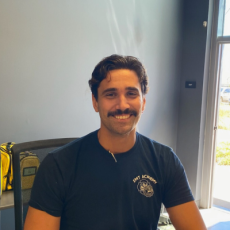
Fire Captain Robert Morris has been in public safety for over 40 years. During his career he worked as an Ocean Lifeguard, Wildland Fire Fighter and Structure Fire Fighter, retiring in the Fall of 2010. Captain Morris took his first EMT course in 1982 completing the fire academy pre-requisites in 1983.
In the Fall of 1983 he attended the 50th Fire Academy at Santa Ana College and received a degree in Fire Science. He also received his Paramedic Certificate in 1990 from Saddleback College. Mr. Morris began teaching in 1999 at the request of a fellow colleague who ran the fire science program at Central County ROP as a last minute substitute. “After teaching my first class I was hooked as an educator, providing guidance and emergency medicine technician skills to young students.” For the next 21 years he has worked teaching Fire Tech and EMT courses. He began Full-Time teaching at Oxnard College in August 2013 where he is presently a Tenured full-time faculty EMT instructor.
He and his significant other have seven children and 11 grandchildren. They enjoy spending as much time as possible with family. His hobbies include camping, boating both on the Ocean and at the river, concerts and being outdoors with the latest addition to the family, their 2-year-old Labrador retriever, Rhiver.

Professor Johnson ‘s journey into emergency medicine began with his EMT (Emergency Medical Technician) certification at Ventura College in 1997. He had worked for nearly two decades as a seasonal Ocean Lifeguard at Ocean Lifeguard, City of Port Hueneme.
He earned dual Bachelor of Arts degrees in Religion and Psychology at Pepperdine University in 2003. Concurrently with his education, he volunteered as a firefighter at Pepperdine University. Professor Johnson worked as an EMT at McCormick Ambulance, providing crucial pre-hospital care. He used his degree to work with teens in a group home setting at Pacific Lodge Youth Service. He attended the Oxnard College Fire Academy in 2005 graduating in Class 21. In 2008, Professor Johnson completed an Associate of Science degree in Paramedic Studies. He worked as a paramedic at Goldcoast Ambulance, delivering advanced medical care to residents of Ventura County. Professor Johnson served as a Firefighter/Paramedic on a per diem basis at the La Habra Heights Fire Department. Currently, professor Johnson teaches EMT R169 at Oxnard College and is the Recreation & Ocean Safety Supervisory at City of Port Hueneme.
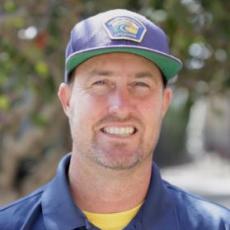
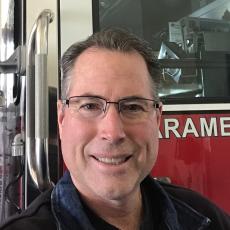
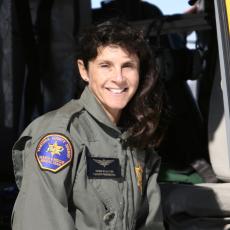
Mr. Christopher Connolly is the EMT Instructional Lab Technician. In his previous role with the Ventura County Community College District, Mr. Connolly taught Spanish language for 20 years. He holds a BA from UCSD and a Master’s degree from Middlebury College, both in Spanish Literature.
Mr. Connolly’s first year as an ocean lifeguard was 1990 for the California State Parks. He is still an active lifeguard today. A graduate of the Oxnard College Regional Fire Academy, Mr. Connolly served as a volunteer firefighter for several years for the City of Fillmore and the Morongo Valley Fire Dept. Mr. Connolly is a recipient of the United States Lifesaving Assoc. Medal of Valor (2016) and the California Governor’s Medal of Valor awarded by Governor Jerry Brown (2017)

